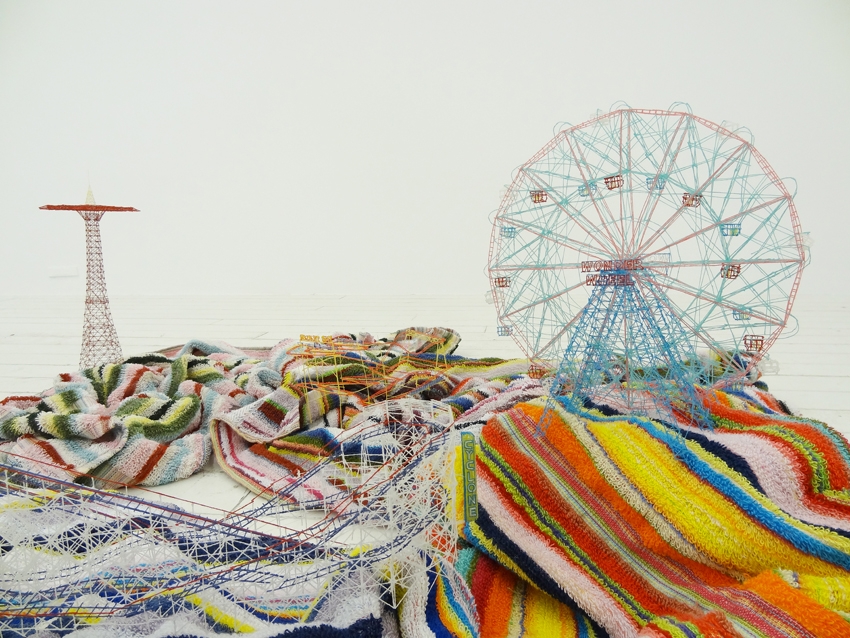ArtReview sent a questionnaire to artists and curators exhibiting in and curating the various national pavilions of the 2017 Venice Biennale, the responses to which will be published daily in the lead-up to the Venice Biennale opening (13 May – 26 November).
Takahiro Iwasaki is representing Japan. The pavilion is in the Giardini.
What can you tell us about your exhibition plans for Venice?
Except for Reflection Model [2014], all works are created newly for the Biennale. This exhibition is configured with seven installations. Some of the works have been created onsite without previous preparation. The connection between those installations is that each work has invisible water surface.
How is making a show for the Venice Biennale different to preparing a ‘normal’ exhibition? Or another biennial?
I usually visit the exhibition areas and make the main installation with household items that I find onsite. However, this felt odd for the Venice Biennale, because the Japanese Pavilion is nested in a different country. I decided this exhibition at the Venice Biennale could be expressed as a site-specific exhibition by being conscious that what ‘Japan’ should be is based on my ideology.
There are a huge number of biennial exhibitions across the world nowadays. Do you think the Venice Biennale still has a special status? And if so, why?
Yes, I do think the Venice Biennale has a special status, because in other biennial exhibitions around the world, usually one curator establishes the theme, a place will not be fixed and the style of the exhibition will be simple and clear. On the other hand, the Venice Biennale is configured with country pavilions and special exhibitions, so it can express the period critically and deeply. I think the awarding format for the pavilion is coming to be valued like the Olympics and film festival celebrations.
What does it mean to ‘represent’ one’s country? Do you find it problematic?
I think this is the site-specific art exhibition, which is a very rare opportunity to ‘represent’ something. I think it is problematic because it can’t keep up with the new emerging art scenes from immigrants and countries like India and South East Asia. However, it is certain that this form will be the cornerstone for finding new, different ideas when you try to see the world from multiple angles.
The Venice audience is a diverse group. Who is most important to you? The artists, gallerists, curators and critics concentrated around the opening? Or the general public that visits in the months that follow?
My very important audience is the ‘critique’. Those written words exceed place and time. And there will be the possibility of letting artists know the different perspectives they couldn’t see. Sometimes I encounter some fantastic critiques by amateurs.
What’s your earliest or best memory from Venice?
The rush of excitement when I first get off at Santa Lucia railway station and see the canal city.
How do you think having a pavilion in Venice can make a difference for the migrant communities, humanitarian protection applicants and stateless individuals it seeks to represent?
At the last Biennale, in 2015, the Armenian Pavilion won a Golden Lion, but I think it’s because there were pavilions from different countries in the Giardini. I believe people constantly seek new values. We need to have basics to clearly measure the value along with history. I consider those historical pavilions from different countries in the Giardini to be positioned at the critical point.
You’ll no doubt be very busy, but what else are you looking forward to seeing?
I would like to meet and talk to people at the vernissage who have different values. Also, I would love to go to the huge old bookstore on the Lido.
Click here to read all the Venice Questionnaires so far
4 May 2017
